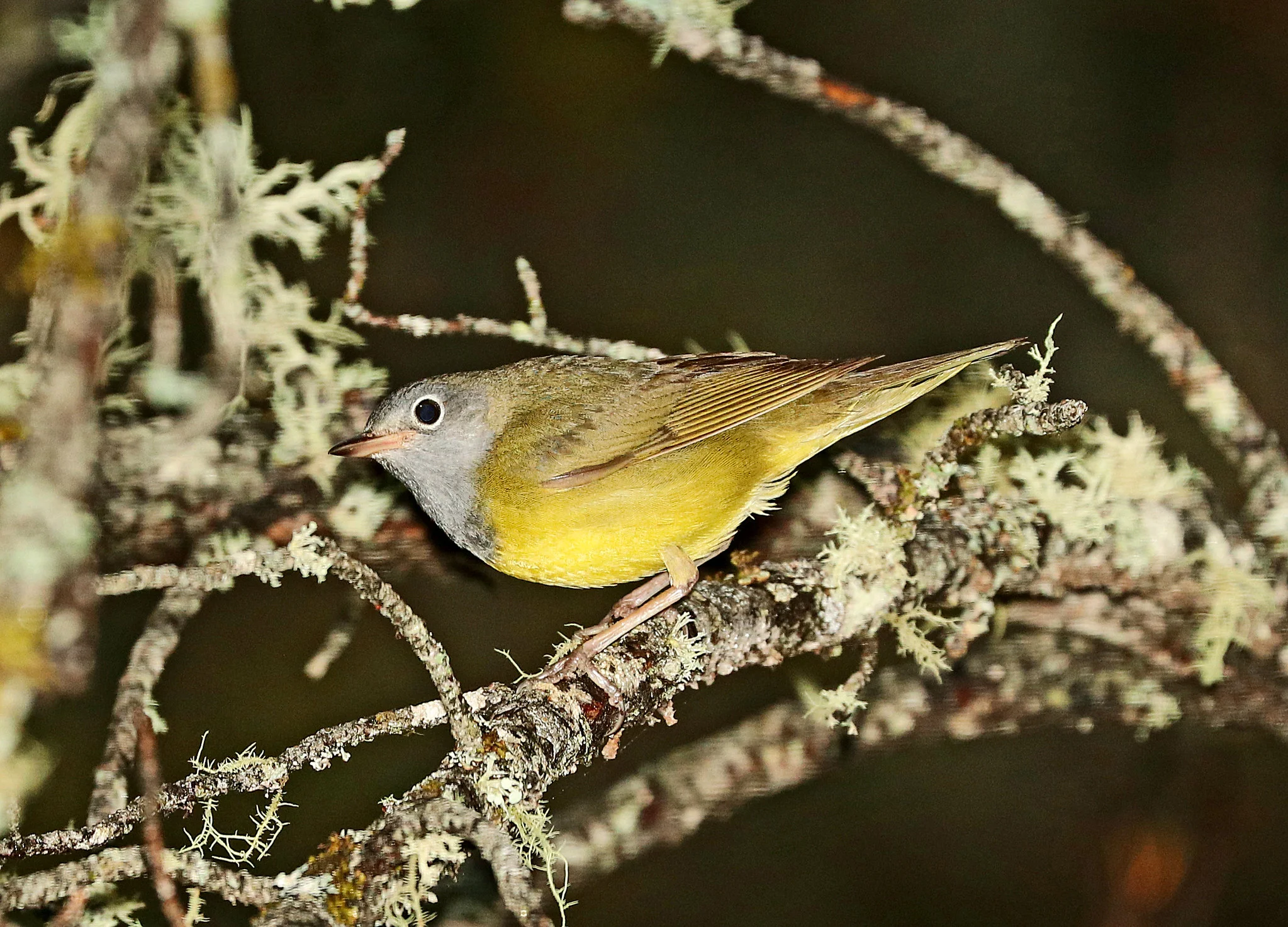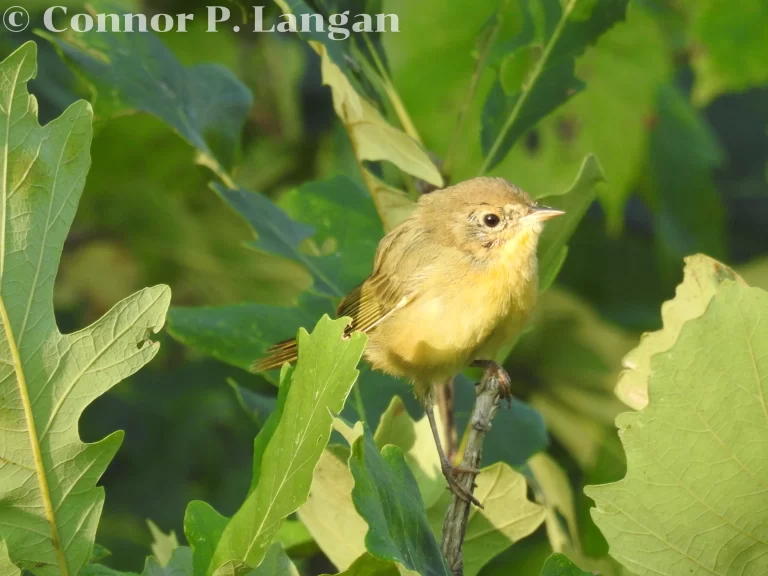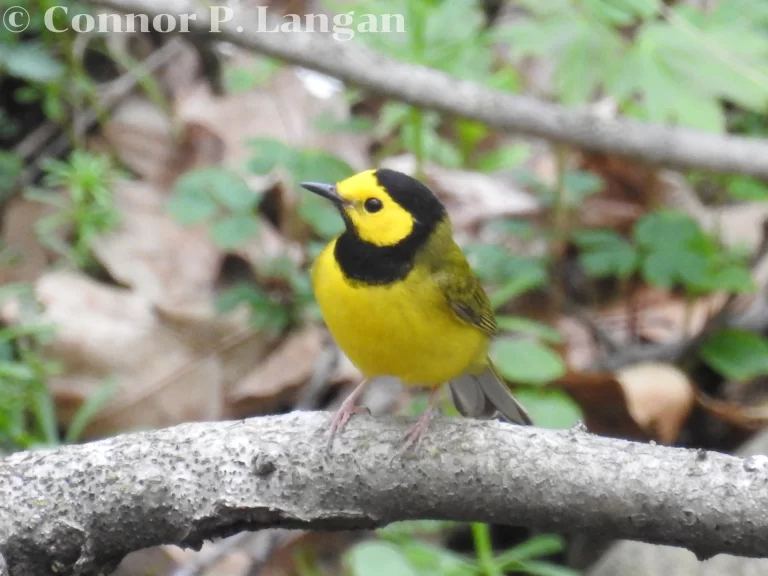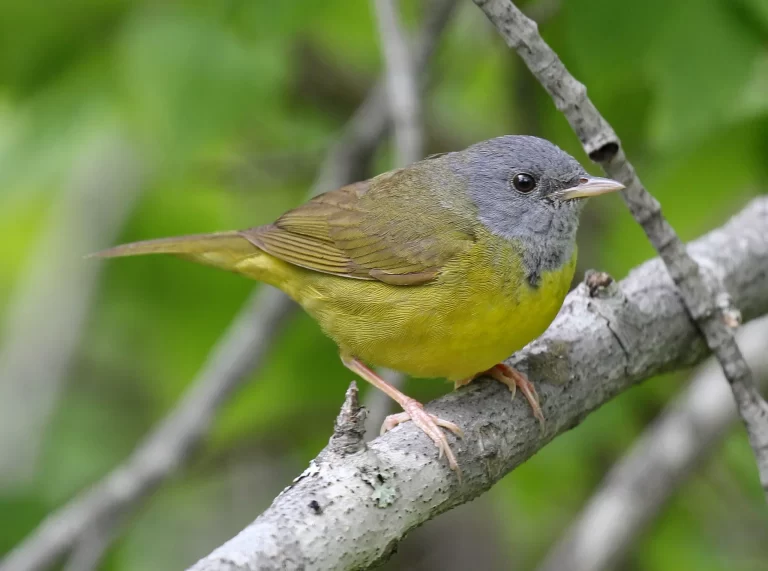Description
A Connecticut Warbler is a large, round warbler with a hefty bill and white eyerings.
This species may be anywhere from just over 5 inches long to just under 6 inches long. These birds weigh about 0.5 ounces.
Males and females have a similar appearance. Both sexes have gray hoods, dark gray throats and chests, yellow underparts, and green backs, wings, and tails. Females are often slightly duller than males.
Immature Connecticut Warblers are a drab green color overall, with the underparts being a bit lighter than the upperparts. Immatures have a complete white eyering just as adults do.
Connecticut Warbler Behavior
Connecticut Warblers are secretive warblers. Consequently, ornithologists know little about these birds compared to other warbler species.
This songbird walks along the ground rather than hopping as most warblers do. Connecticut Warblers are known to frequently pump their tails as it move about.
Males maintain a territory of just over an acre. Males are territorial, often chasing other birds away from their territory. Meanwhile, females do not display territorial behaviors.
Connecticut Warbler Diet
Insects and other small invertebrates are the primary food source for this species, though these birds may consume berries when they are available.
Habitat
Connecticut Warblers seek out openings in forests for breeding. Bogs and early successional habitats are appealing ecosystems for this species. However, any gap in a forest that features young trees or shrubs could host these warblers.
Connecticut Warblers can be found in similar habitats during migration and winter, though these birds also seem to inhabit rainforests and cloud forests during the winter.
Range
This species breeds in the upper Midwest and Southern Canada. This species migrates a considerable distance to its wintering grounds in central South America.
Breeding
Some unknowns about Connecticut Warbler breeding still exist. For instance, those who study this bird still do not know how long it takes for the young to hatch and leave the nest.
While ornithologists still have much to learn about the breeding ecology of this species, they do know that males help females feed the young once they’ve hatched. However, it is unlikely that males help with nest building, and it is not known if they help with incubation.
Females place nests on the ground or just above the ground in dense brush. A cup nest is constructed out of grasses, plant fibers, and leaves. The interior of the nest is lined with soft materials such as hair, feathers, or lichens.
Ornithologists believe that Connecticut Warblers produce just one brood of eggs per year, with anywhere from 3 to 5 eggs in each clutch. Once the young have fledged, family units that include both parents often stay together for the next several weeks – an unusual behavior for warblers.
Backyard Birding
Those who spot a Connecticut Warbler in their backyard should consider themselves to be very fortunate. These birds do not feed from bird feeders or nest in birdhouses.
Someone who lives adjacent to forested land with early successional habitat has the best chance of observing one of these birds in their yard. These birds may bathe in bird baths that are surrounded by vegetation during migration.
Connecticut Warbler Population Status
Connecticut Warblers have a total population of nearly 2 million birds, but their numbers have declined by over 60% in the last half-century. These songbirds have a fairly small range as far as warblers go. Therefore, their population will need to be closely monitored in the coming decades.
Connecticut Warbler Facts
- Connecticut Warblers are perhaps the most mysterious warbler in North America, with ornithologists still working to discover basic information about this species.
- Although Connecticut Warblers are named after the state of Connecticut, they do not breed in this state. Moreover, they are rare migrants there.




